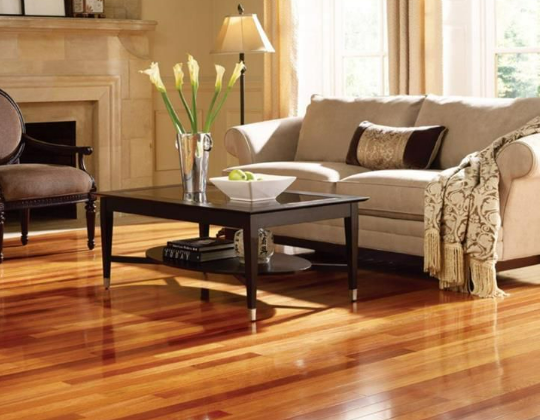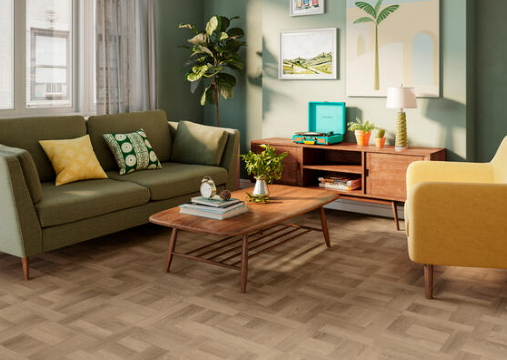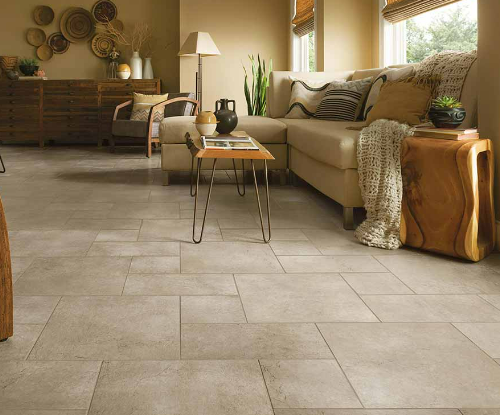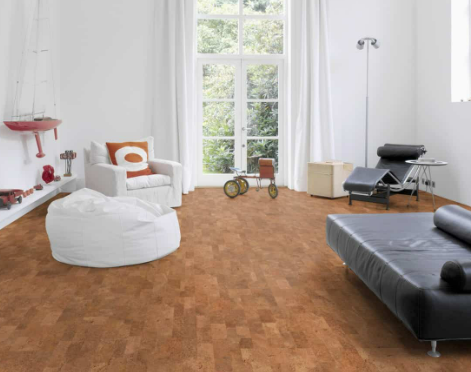
Choosing the right flooring for your living room is a crucial decision that can significantly impact both the look and functionality of your home. The living room is often the central space for family gatherings, entertaining guests, and everyday relaxation, making it essential to select a flooring option that aligns with your lifestyle and preferences.
Several factors play a key role in making the right choice:
- Aesthetics: The visual appeal of your flooring should complement the overall design of your living room. Whether you prefer a classic hardwood look, modern tiles, or cozy carpet, the flooring sets the tone for the room’s style and ambiance.
- Durability: Consider how much wear and tear your flooring will endure. High-traffic areas may require more durable options to withstand daily use and maintain their appearance over time.
- Comfort: Since the living room is a space for relaxation and socializing, comfort is a significant factor. Choose flooring that feels pleasant underfoot and enhances the overall comfort of the space.
- Maintenance: Different flooring types come with varying levels of maintenance. Some options require regular cleaning and upkeep, while others are more forgiving and easier to manage.
By carefully evaluating these factors, you can ensure that your choice not only enhances the beauty of your living room but also meets your practical needs and lifestyle demands.
Hardwood Flooring

Description: Hardwood flooring is renowned for its classic and timeless appeal. It brings an elegant warmth to any living room, enhancing its overall aesthetic with natural beauty. Available in various wood types and finishes, hardwood can complement both traditional and contemporary styles.
Pros:
- Durable: Hardwood is a robust flooring option that can withstand years of use. When properly maintained, it can last a lifetime.
- Easy to Clean: Regular sweeping and occasional mopping are usually sufficient to keep hardwood floors looking pristine.
- Increases Home Value: Homes with hardwood flooring often have a higher market value, making it a smart investment.
Cons:
- Can Be Expensive: Hardwood flooring typically comes at a higher cost compared to other flooring options, both in terms of material and installation.
- Susceptible to Scratches and Water Damage: While durable, hardwood can be prone to scratches from pets and furniture. It also may warp or discolor if exposed to excessive moisture.
Best For: Hardwood flooring is ideal for both traditional and modern living rooms, as well as high-traffic areas where its durability and timeless elegance can be fully appreciated.
Carpet Flooring

Description: Carpet flooring is celebrated for its soft and cozy texture, providing a comfortable and inviting atmosphere in any living room. With a wide array of colors, patterns, and textures available, carpet can be customized to fit various design preferences and create a warm, plush environment.
Pros:
- Comfortable: Carpet offers a cushioned surface that is gentle on the feet, making it an excellent choice for lounging and relaxation.
- Good Insulation: Carpet acts as an insulating layer, helping to keep rooms warmer in the winter and reducing energy costs.
- Reduces Noise: Its soft surface absorbs sound, which minimizes noise levels and contributes to a quieter living space.
Cons:
- Stains Easily: Carpet can be prone to stains from spills and accidents, which may require immediate attention and specialized cleaning.
- Requires Regular Cleaning: To maintain its appearance and hygiene, carpet needs regular vacuuming and occasional deep cleaning.
- Can Wear Out Over Time: Carpet may show signs of wear and tear, such as flattening or fraying, especially in high-traffic areas.
Best For: Carpet flooring is particularly well-suited for family rooms, bedrooms, and any space where comfort and warmth are prioritized. Its sound-absorbing qualities make it ideal for creating a serene and cozy atmosphere.
Laminate Flooring

Description: Laminate flooring offers a budget-friendly alternative to hardwood with a similar visual appeal. Designed to mimic the look of natural wood, laminate provides a stylish and practical option for those seeking an attractive and cost-effective flooring solution.
Pros:
- Scratch-Resistant: Laminate is engineered to withstand scratches and dents, making it a durable choice for high-traffic areas.
- Easy to Install: With its click-lock installation system, laminate flooring can be installed quickly and often without the need for professional help.
- Budget-Friendly: Generally more affordable than real wood, laminate provides the look of hardwood at a fraction of the cost.
Cons:
- Can Look Less Authentic: While laminate mimics the appearance of wood, it may not capture the same depth and texture as genuine hardwood.
- Not as Durable in High Moisture Areas: Laminate can be prone to warping or swelling if exposed to excessive moisture, making it less suitable for areas prone to spills or high humidity.
Best For: Laminate flooring is ideal for budget-conscious projects and areas with heavy foot traffic where durability and affordability are key considerations. It provides a stylish look while offering practical benefits for everyday use.
Vinyl Flooring

Description: Vinyl flooring is a synthetic option designed to replicate the appearance of natural materials such as wood or stone. With a range of styles and patterns available, vinyl offers a practical and versatile flooring solution that suits various aesthetic preferences and functional needs.
Pros:
- Water-Resistant: Vinyl flooring is highly resistant to water and moisture, making it an excellent choice for rooms prone to spills or high humidity.
- Low-Maintenance: It requires minimal upkeep, typically only needing regular sweeping and occasional mopping to keep it clean and looking fresh.
- Versatile Design Options: Vinyl comes in an array of colors, patterns, and textures, allowing for a wide range of design possibilities that can mimic more expensive flooring materials.
Cons:
- Can Be Less Durable: While vinyl is resilient, it may not be as durable as some other flooring options, particularly in high-traffic areas where it can show signs of wear over time.
- May Off-Gas: Some vinyl products may release volatile organic compounds (VOCs) into the air, which can affect indoor air quality, though many modern options are low-VOC.
Best For: Vinyl flooring is ideal for rooms with high humidity, such as kitchens and bathrooms, as well as active households where durability and water resistance are important. Its variety of designs and ease of maintenance make it a versatile choice for many different spaces.
Tile Flooring

Description: Tile flooring is a durable option available in ceramic, porcelain, and stone varieties. Renowned for its strength and longevity, tile provides a versatile and practical solution for many flooring needs, offering a range of styles and finishes to suit different tastes.
Pros:
- Water-Resistant: Tile is highly resistant to water, making it an excellent choice for areas prone to spills and moisture, such as bathrooms and kitchens.
- Long-Lasting: Known for its durability, tile can withstand heavy foot traffic and remains in good condition for many years with proper maintenance.
- Easy to Clean: Tile surfaces are straightforward to maintain, requiring only regular sweeping and mopping to keep them looking their best.
Cons:
- Can Be Cold and Hard Underfoot: Tile can feel cold and hard compared to other flooring options, which may be less comfortable for standing or walking for extended periods.
- Installation Can Be Labor-Intensive: The installation process for tile can be complex and time-consuming, often requiring professional assistance to ensure proper placement and grouting.
Best For: Tile flooring is particularly well-suited for high-traffic areas and homes in warmer climates. Its durability and resistance to moisture make it ideal for spaces that experience frequent use or exposure to water.
Bamboo Flooring

Description: Bamboo flooring is an eco-friendly alternative to traditional hardwood, crafted from the rapidly growing bamboo grass. It offers a modern and stylish appearance that can enhance the aesthetic of various living spaces while promoting sustainability.
Pros:
- Sustainable: Bamboo is a renewable resource that grows quickly, making it a more environmentally responsible choice compared to traditional hardwood.
- Stylish: With its sleek and contemporary look, bamboo flooring can complement a range of interior design styles and adds a unique flair to modern spaces.
- Relatively Hard and Durable: Bamboo is known for its hardness and durability, making it a resilient flooring option that can handle everyday wear and tear.
Cons:
- Can Be Affected by Humidity: Bamboo flooring can be sensitive to changes in humidity, which may lead to expansion or contraction, potentially affecting its stability.
- Quality Varies: The quality of bamboo flooring can differ significantly between manufacturers, so it’s important to choose a reputable brand to ensure longevity and performance.
Best For: Bamboo flooring is ideal for environmentally conscious homeowners and modern living spaces. Its sustainable nature and stylish appearance make it a fitting choice for those looking to incorporate eco-friendly materials into contemporary interior designs.
Cork Flooring

Description: Cork flooring is crafted from the bark of the cork oak tree, offering a distinctive texture and appearance that can add character to any living space. Known for its unique aesthetic and functional benefits, cork is an eco-friendly flooring option with a soft, cushioned feel.
Pros:
- Soft Underfoot: Cork flooring provides a comfortable and cushioned surface, which is gentle on the feet and ideal for standing or walking for extended periods.
- Eco-Friendly: As a renewable resource, cork is harvested from the bark of cork oak trees without harming the tree, making it an environmentally sustainable choice.
- Good Insulation: Cork has natural insulating properties, which help in reducing noise and maintaining a comfortable temperature in the room.
Cons:
- Can Be Damaged by Sharp Objects: The surface of cork flooring may be prone to dents and scratches from sharp or heavy objects, which can affect its appearance and durability.
- May Require Regular Sealing: To maintain its appearance and durability, cork flooring often needs to be regularly sealed to protect it from moisture and wear.
Best For: Cork flooring is well-suited for rooms that benefit from extra cushioning, such as playrooms or areas where comfort is essential. It is also a great choice for sustainable home projects, given its eco-friendly characteristics and natural materials.
Selecting the right flooring for your living room involves balancing aesthetics, durability, comfort, and maintenance. Each flooring type—from the classic elegance of hardwood to the versatile practicality of vinyl—offers unique benefits suited to different needs and preferences.
Consider your specific requirements, such as budget constraints, lifestyle demands, and the overall look you wish to achieve. Whether prioritizing comfort, ease of maintenance, or eco-friendliness, there’s a flooring option to match your goals.
For the best results, consult with flooring professionals who can provide expert guidance and ensure you make a well-informed choice tailored to your living room.
